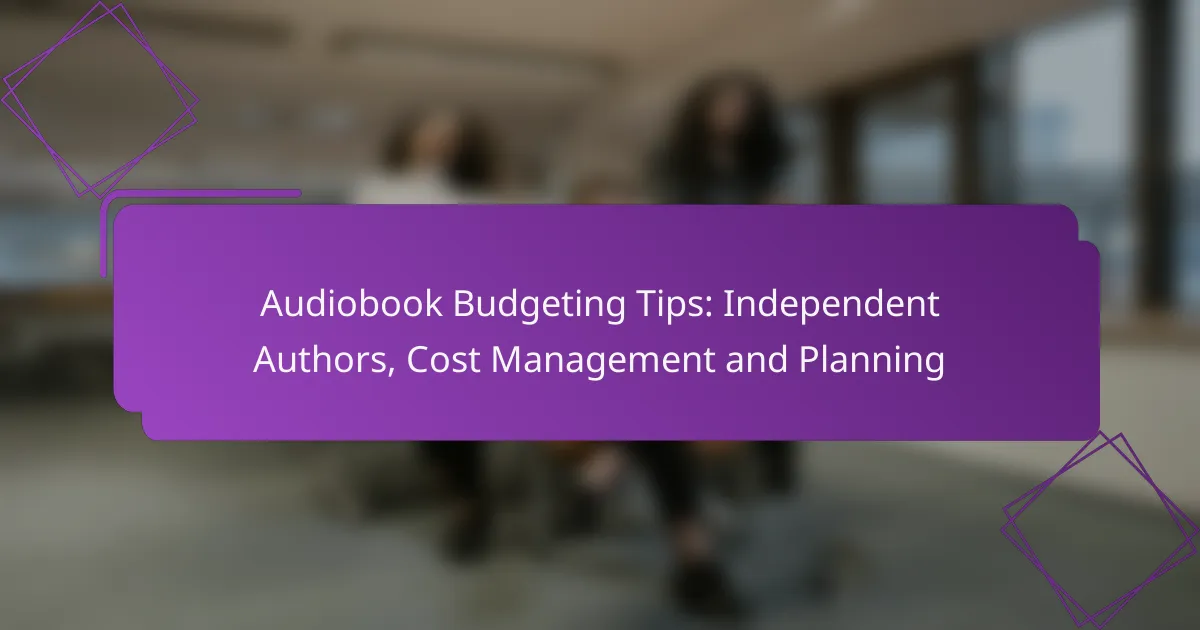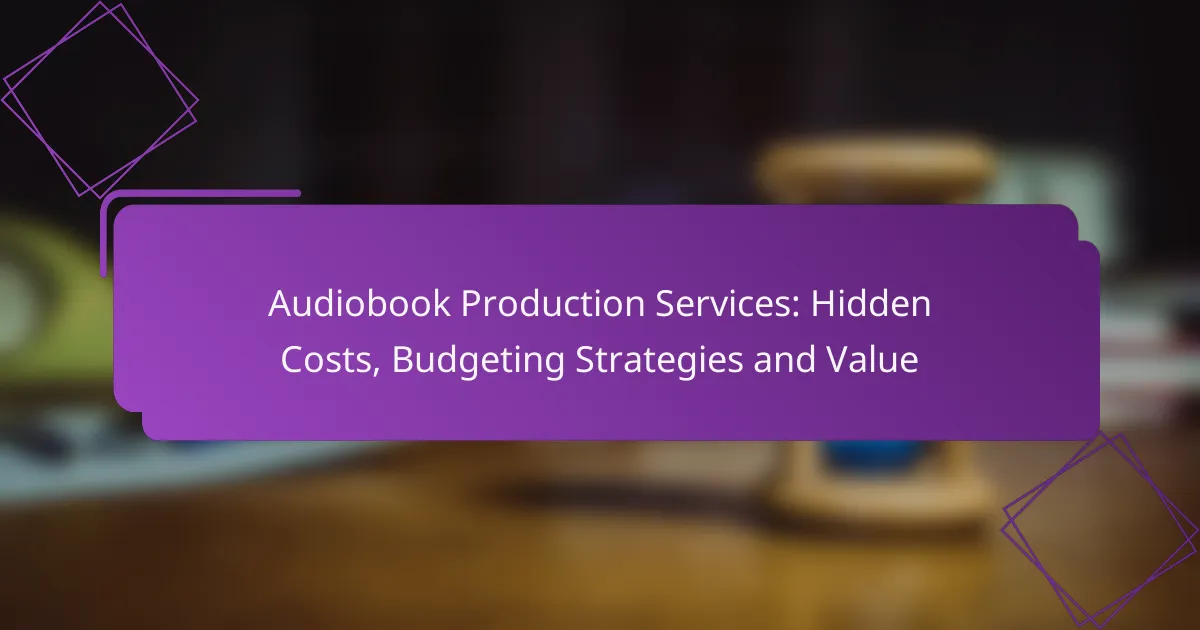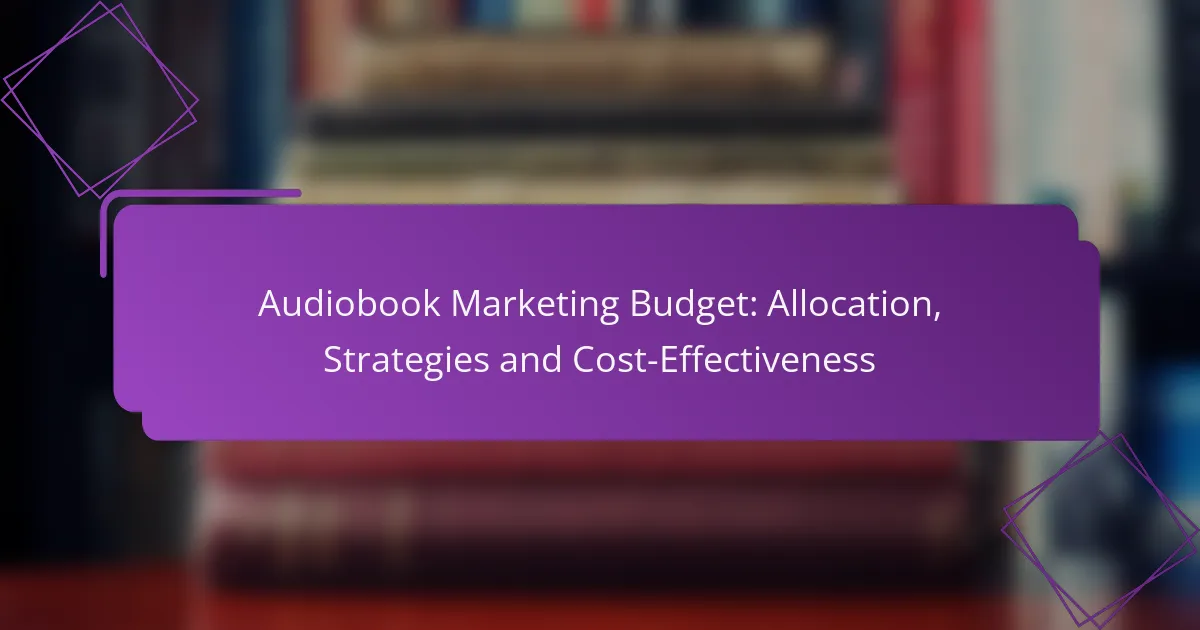When deciding between DIY and professional audiobook production, it’s essential to weigh the benefits of each approach. DIY production offers cost savings and creative control, allowing you to customize the process to fit your vision. In contrast, professional production ensures high-quality audio and expert narration, making it ideal for those looking to maximize their audience reach with a polished final product.

What are the benefits of DIY audiobook production?
DIY audiobook production offers several advantages, including cost savings, creative control, and flexibility in scheduling. By taking on the production yourself, you can tailor the process to your specific needs and preferences while potentially reducing expenses.
Cost savings
One of the most significant benefits of DIY audiobook production is the potential for cost savings. Hiring professional narrators and sound engineers can be expensive, often ranging from hundreds to thousands of dollars. By producing the audiobook yourself, you can eliminate these costs and invest in quality recording equipment instead.
Consider the expenses involved in professional production, such as studio time and editing fees. With DIY, you can use home recording setups and software that are relatively affordable, allowing you to keep production costs low while still achieving a quality result.
Creative control
DIY audiobook production allows for complete creative control over the final product. You can choose the tone, pacing, and style of narration that best fits your vision. This level of involvement ensures that the audiobook reflects your unique voice and brand.
When you handle the production, you can make real-time adjustments and experiment with different styles. This flexibility can lead to a more authentic and engaging listening experience, as you have the freedom to express your ideas without external constraints.
Flexibility in scheduling
Producing an audiobook yourself provides significant flexibility in scheduling. You can record at your convenience, whether that’s during the day or late at night, without being tied to a professional studio’s hours. This adaptability can be particularly beneficial for those with busy schedules or other commitments.
Additionally, you can pace the production process according to your needs. If you prefer to take breaks or need extra time for editing, you can do so without the pressure of a deadline imposed by a professional service. This self-directed approach can lead to a more enjoyable and less stressful production experience.
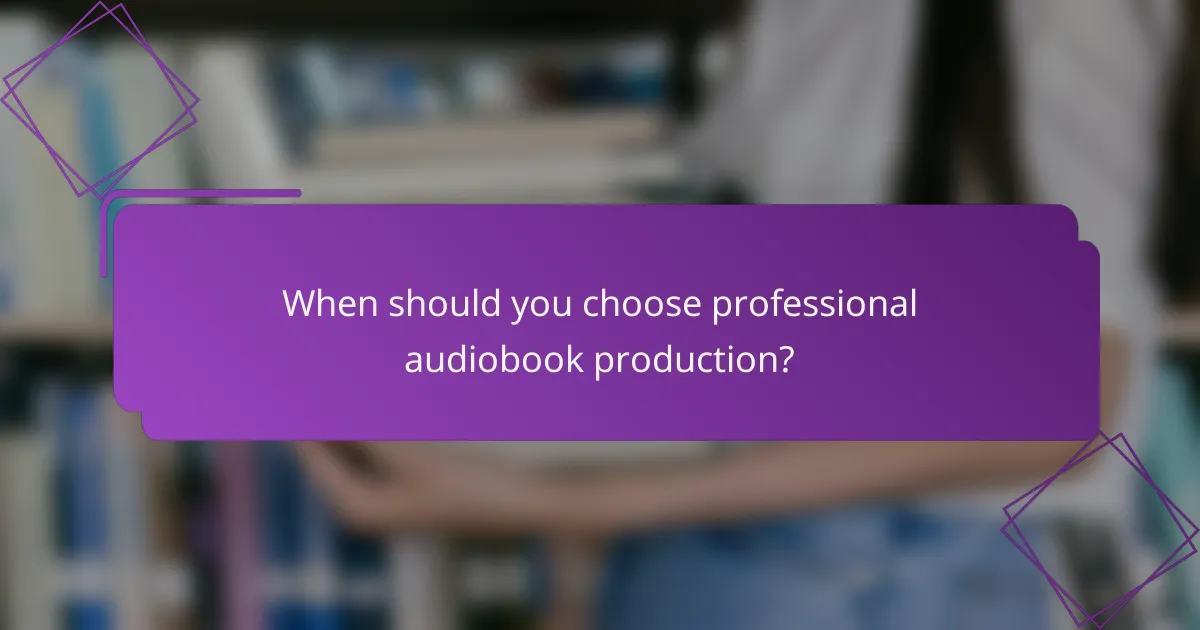
When should you choose professional audiobook production?
Opt for professional audiobook production when you need high-quality audio, expert narration, and efficient turnaround times. This choice is especially beneficial for authors and publishers aiming to enhance their audience reach and ensure a polished final product.
High-quality audio standards
Professional audiobook production adheres to strict audio quality standards, ensuring clarity and consistency throughout the recording. This includes proper soundproofing, high-quality microphones, and advanced editing techniques to eliminate background noise and enhance vocal clarity.
For instance, a professional studio may use equipment that captures audio at a minimum of 44.1 kHz sample rate, which is standard for high-fidelity recordings. This level of quality is crucial for maintaining listener engagement and satisfaction.
Access to professional narrators
Choosing professional production gives you access to skilled narrators who can bring your story to life. These narrators often have extensive training and experience, allowing them to convey emotion and character effectively.
For example, a professional narrator can adjust their tone and pacing to match the genre of your audiobook, whether it’s a gripping thriller or a light-hearted romance. This expertise can significantly enhance the listener’s experience compared to a DIY approach.
Time efficiency
Professional audiobook production is typically faster than a DIY process, as it leverages the expertise of a team dedicated to audio production. This can save you weeks or even months in the production timeline, allowing you to focus on other aspects of your project.
Moreover, professionals can streamline the recording and editing process, often completing projects in a matter of days rather than weeks. This efficiency is particularly valuable for authors looking to release their audiobooks in sync with print or digital versions.

How do DIY and professional production compare?
DIY audiobook production and professional production differ significantly in terms of quality, time investment, and required skills. Choosing between them depends on your budget, timeline, and desired sound quality.
Quality of sound
Sound quality is often the most noticeable difference between DIY and professional audiobook production. Professional studios typically use high-end equipment and experienced sound engineers, resulting in clearer, more polished audio. In contrast, DIY projects may suffer from background noise, inconsistent volume levels, and less effective editing.
If you are aiming for a high-quality product that meets industry standards, professional production is usually the better choice. However, for personal projects or smaller audiences, DIY can suffice if you invest time in learning basic sound recording and editing techniques.
Production time
DIY audiobook production can take significantly longer than hiring professionals. The time needed for recording, editing, and mastering can stretch from several days to weeks, depending on your experience and the complexity of the project. Professionals, on the other hand, can often complete the process in a matter of days due to their expertise and access to efficient tools.
Consider your deadlines when deciding. If you need a quick turnaround, professional services may be worth the investment. For those with more flexible timelines, DIY can be a rewarding learning experience.
Skill requirements
Producing an audiobook yourself requires a range of skills, including voice acting, audio editing, and sound engineering. While many resources are available online to help you learn these skills, there is a steep learning curve. In contrast, professionals bring years of experience and specialized training, ensuring a higher quality end product.
If you choose the DIY route, start by familiarizing yourself with basic audio software and recording techniques. Avoid common pitfalls like poor microphone placement and inadequate soundproofing, which can compromise your final product. For those lacking the time or inclination to learn, hiring a professional can save you effort and yield superior results.
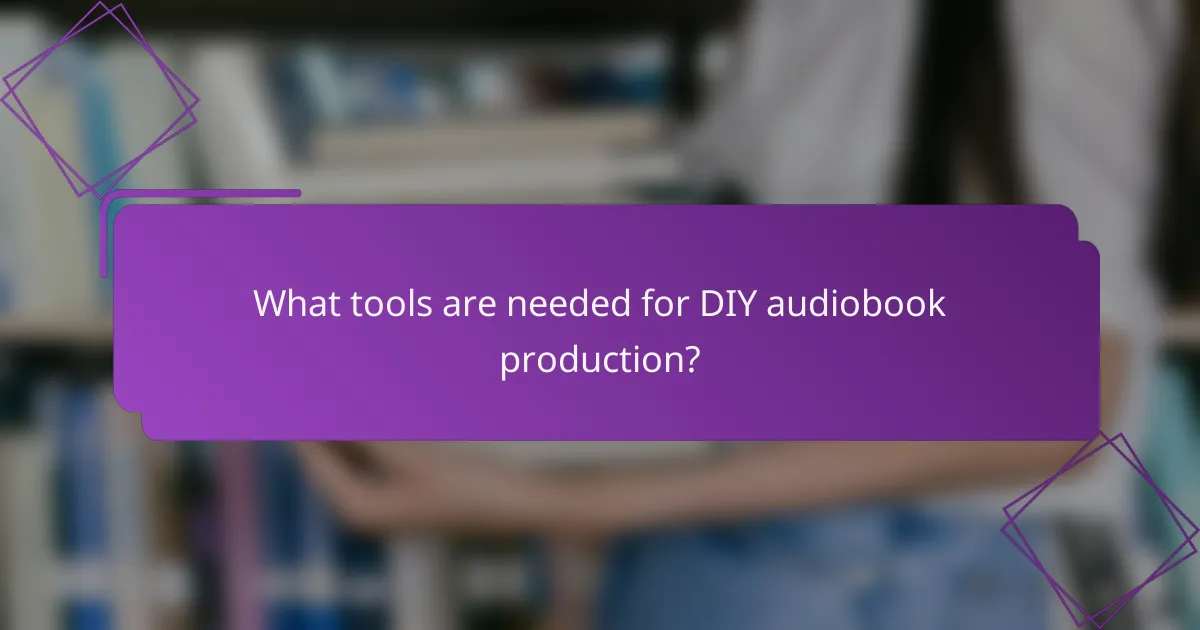
What tools are needed for DIY audiobook production?
For DIY audiobook production, essential tools include recording software, a quality microphone, and editing tools. These components are crucial for achieving professional-sounding results without hiring a studio or a producer.
Recording software options
Recording software is vital for capturing audio. Popular options include Audacity, which is free and user-friendly, and Adobe Audition, which offers advanced features for a subscription fee. When choosing software, consider your budget and the complexity of your project.
Look for software that supports multi-track recording, as this allows for better control over different audio elements. Ensure it is compatible with your operating system and has a straightforward interface to streamline your workflow.
Microphone recommendations
A good microphone significantly impacts audio quality. USB microphones like the Blue Yeti are popular for their ease of use and decent sound quality, making them ideal for beginners. For more professional setups, consider XLR microphones such as the Audio-Technica AT2020, which require an audio interface.
When selecting a microphone, focus on its frequency response and sensitivity. A cardioid pattern is preferable as it captures sound from the front while minimizing background noise, which is essential for clear narration.
Editing tools
Editing tools are necessary for refining your audiobook. Software like Reaper and GarageBand can help you cut, splice, and enhance audio tracks. Look for features such as noise reduction and equalization to improve sound quality.
As you edit, pay attention to pacing and clarity. Aim for a final product that flows smoothly, with minimal distractions from background noise or abrupt cuts. Regularly save your work and consider exporting in formats like MP3 or WAV for compatibility with various platforms.
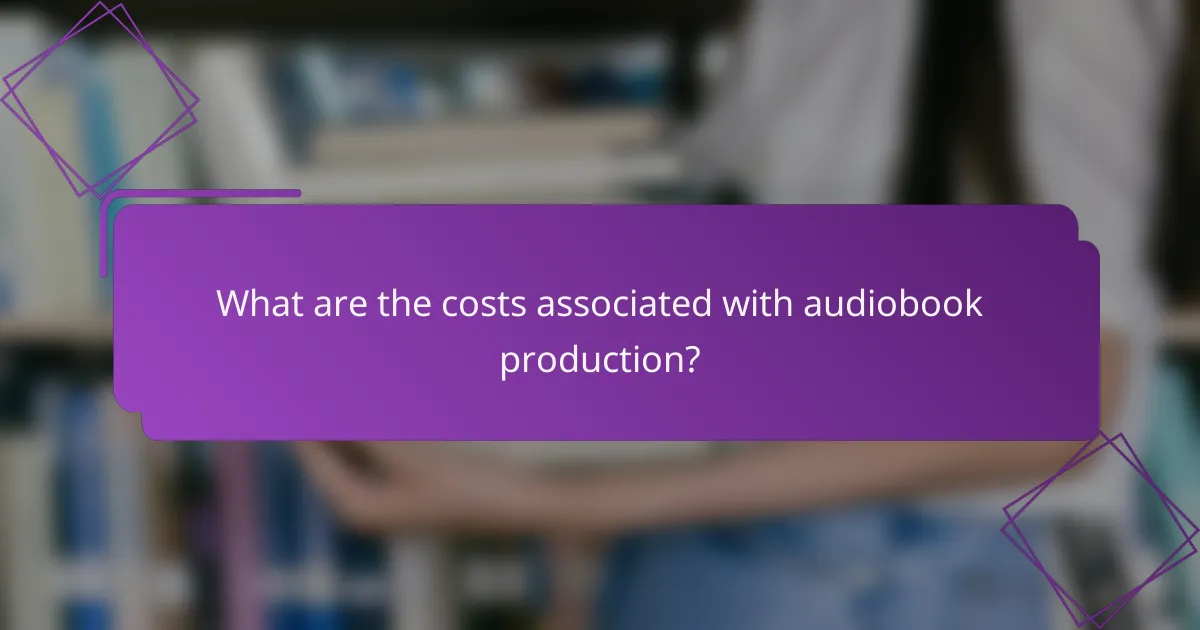
What are the costs associated with audiobook production?
The costs of audiobook production can vary significantly based on whether you choose to DIY or hire a professional service. Understanding these costs is essential for making an informed decision that aligns with your budget and quality expectations.
DIY cost breakdown
When producing an audiobook yourself, the primary expenses include equipment, software, and your time. Basic recording equipment can range from a few hundred to a couple of thousand dollars, depending on quality. Additionally, audio editing software can cost anywhere from free options to several hundred dollars for professional-grade tools.
Don’t forget to factor in costs for soundproofing your recording space, which can be minimal with DIY solutions or more substantial if you opt for professional acoustic treatment. Overall, a DIY project might cost anywhere from a few hundred to a few thousand dollars, depending on your choices.
Professional service pricing
Hiring a professional audiobook production service typically involves higher upfront costs but can save you time and ensure a polished final product. Prices for professional services can range from around $200 to over $1,500 per finished hour of audio, depending on the narrator’s experience and the studio’s reputation.
Many services offer packages that include narration, editing, and mastering, which can help streamline the process. While the initial investment is higher, the quality and efficiency gained from professionals can be worth it for many authors.
Hidden costs in production
Hidden costs in audiobook production can significantly impact your overall budget. For DIY projects, you may encounter unexpected expenses such as hiring a voice coach or additional software for mastering audio. These can add hundreds of dollars to your initial budget.
For professional services, consider potential extra fees for revisions, additional editing, or marketing support. Always clarify what is included in the quoted price and ask about any potential extra charges to avoid surprises later on.
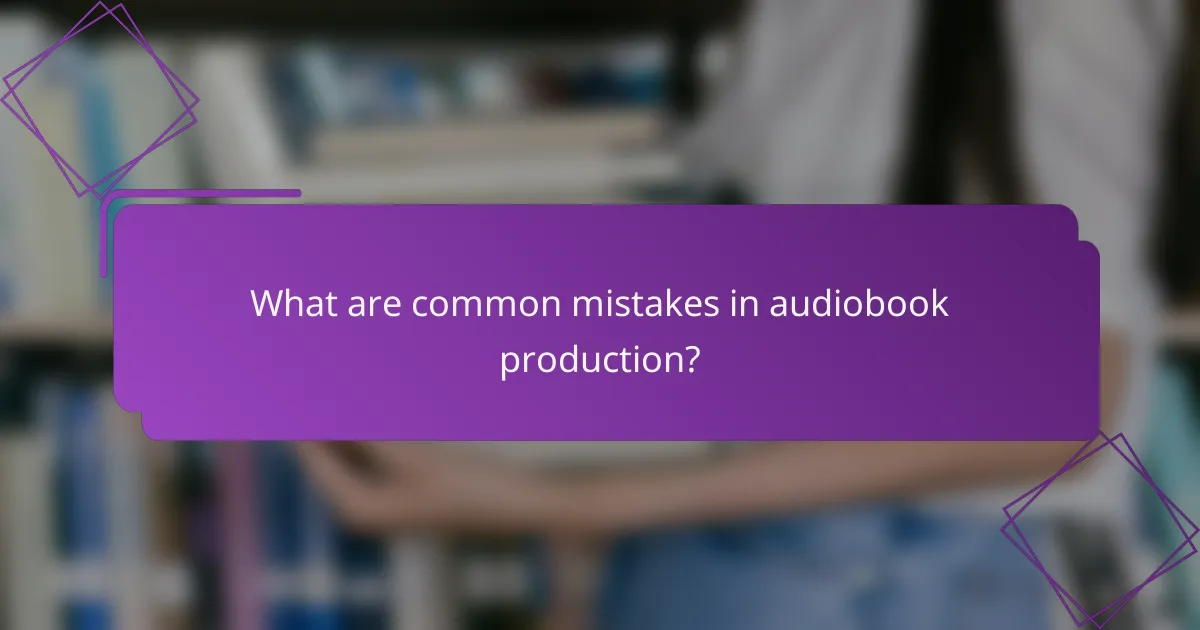
What are common mistakes in audiobook production?
Common mistakes in audiobook production can significantly impact the final product’s quality and listener experience. Key areas to watch include pacing, audio quality, and understanding the target audience.
Pacing issues
Pacing issues occur when the narration speed is inconsistent or inappropriate for the content. A narrator may rush through complex sections or drag out simpler passages, leading to listener confusion or boredom.
To avoid pacing problems, practice reading aloud and time yourself. Aim for a steady pace of around 150-160 words per minute, adjusting as necessary based on the material’s complexity and emotional tone.
Audio quality neglect
Neglecting audio quality can result in distracting background noise, inconsistent volume levels, or poor clarity. These issues can frustrate listeners and detract from the story being told.
Ensure you use a good microphone and a quiet recording environment. Invest in soundproofing materials if necessary and consider using audio editing software to clean up recordings and balance sound levels.
Ignoring target audience
Ignoring the target audience can lead to a mismatch between the content and listener expectations. For instance, a children’s audiobook narrated in a serious tone may not engage young listeners effectively.
Research your audience’s preferences, including age, interests, and listening habits. Tailor your narration style, tone, and even content to resonate with them, ensuring a more enjoyable experience.

